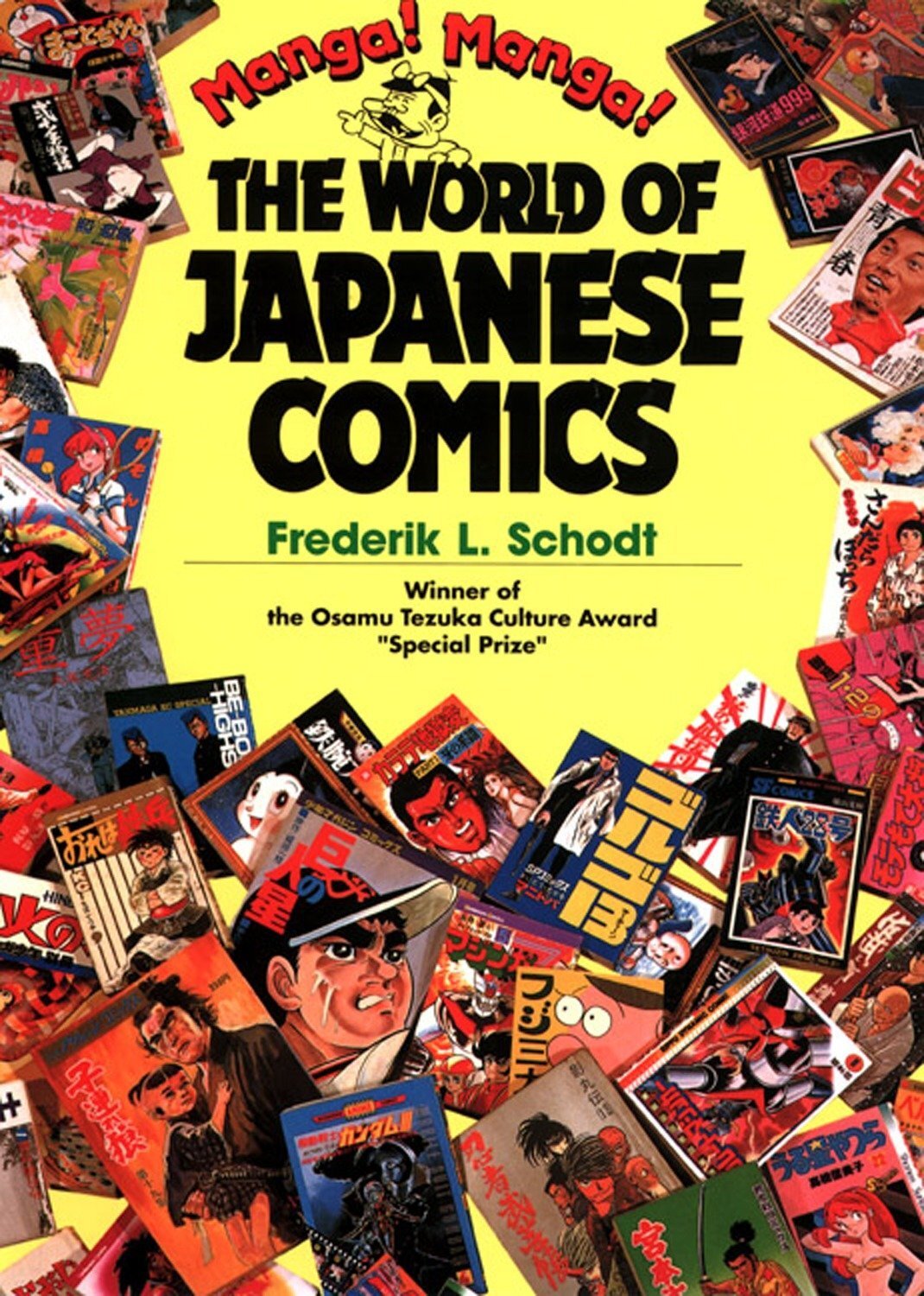Manga! Manga! The World of Japanese Comics by Frederick L. Schodt (Kodansha)
Originally published in hardcover in 1983, Manga! Manga! is still the definitive book that introduces the world to Japan’s multi-billion dollar industry - the world of manga or Japanese comics. It is also the first book to take a serious look at the phenomenon in English.. Although it isn’t a bestseller, the book continues to sell and is often used in university classes on Japanese pop culture. This is an updated edition that was published in 1986. It is currently 2021 but this book is still relevant today as it was when it was first published back in the early eighties. It is not a comprehensive history of the subject as that would take hundreds of volumes to accomplish and would require many additions.
Schodt, who studied Japanese at International Christian University in Japan and graduated in 1972 was awarded a scholarship from Japan’s Ministry of Education to further his education in translation and interpreting. After completing his advanced studies, he and a few students contacted Tezuka Productions, the animation studio started by Osamu Tezuka, to get permission to translate Phoenix into English.
The Foreword is written by Osamu Tezuka, considered to be the God of Manga. He is also known as the Walt Disney of Japan. He is the creator of not only Phoenix but Tetsuwan Atom , Jungle Emperor and Ribbon no Kishi, which are known in the U.S. as Atom Boy, Kimba the White Lion, and Princess Knight.
Just to give you an idea of the magnitude of this business, in 1984, over five billion books and magazines were produced in Japan. Almost thirty percent of the total were manga in either book or magazine form. Even in 1984, “some enterprising reporters have discovered, Japan now uses more paper for its comics than it does for its toilet paper.”
Unlike American comic books, which usually consists of thirty or so pages with a large number of those pages dedicated to advertisements and is purchased mostly by young boys who read it and adult men who collect them, Japanese comics are first serialized in a comic magazine. They are then compiled into books and can run thousands of pages long.
Schodt provides a chronological history of the manga starting even before the term manga was used. One of the earliest examples of manga Schodt talks about are the Chojugiga or “Animal Scrolls” by a Buddhist priest named Toba from the twelfth century which comprised of “Walt Disney-style anthropomorphized animals in antics that mock Toba’s calling - the Buddhist clergy.”
As Japanese manga evolved, from kamishibai which is a form of street theater and storytelling to what it has become today. Manga artists began to gain not only fame but became quite wealthy too. However, the competition is fierce and the work is hard as all the work is usually done by one person - the artist who must think up the storyline, draw the pictures, and meet deadlines. This becomes even more difficult if the artist is writing and drawing manga for multiple publications.
The latter half of the book introduces the reader to a few examples of Japanese manga. Included are excerpts from Osamu Tezuka’s Phoenix (Hi no Tori), Reiji Matsumoto’s Ghost Warrior (Borei Senshi from the series Senjo), Riyoko Ikeda’s The Rose of Versailles (Berusaiyu no Bara and Keiji Nakazawa’s Barefoot Gen (Hadashi no Gen), a comic based on his experiences before, during, and after the atomic bomb was dropped on Hiroshima.
The manga business continues to thrive in Japan. One of the most recent manga which caused a social phenomenon was Kimetsu no Yaiba, known to the English-speaking public as Demon Slayer. As with many of its predecessors, the story got its start in one of the comics magazines, was compiled into book form, then an anime series was created, followed by a full-length feature film, not to mention all the merchandising that accompanies successful stories.
The manga industry continues to grow and has become popular in other countries as well. There seems to be no end in sight for manga and all the would-be manga artists who are hungry for the fame and fortune it may bring. ~Ernie Hoyt
